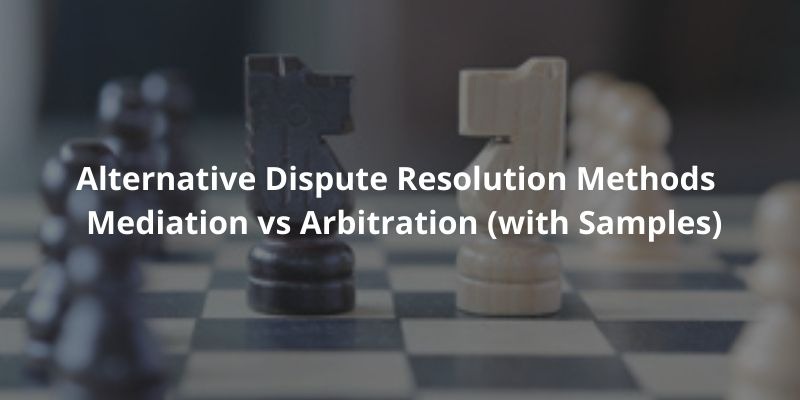Family Law / Divorce / Prenuptial


A prenuptial agreement (also known as a "premarital agreement") is an agreement between a couple before they get married that stipulates how their finances will be managed if they divorce or separate in the future. It would generally include the financial distribution of assets and the financial support to their children (if any).
Talking about a prenuptial is a romance killer, in particular shortly before you get married, which is supposed to last forever (after all, you promise to “love and cherish … for so long as you both shall live” in your wedding vows). Unfortunately, negotiating a prenuptial is not being overly pessimistic on a risk that will never materialise. Divorce rates in many developed countries are close to half and a prenuptial agreement is necessary to protect the wealth accumulated by a husband or wife before they get married, or even after marriage. This is especially true if you come from a wealthy family, or if you plan to inherit your parents' property.
Under the laws of many common law jurisdictions, married couples automatically receive 50% of their spouse's financial and asset claims in a subsidiary relief process for divorce. If the couple is from different economic classes (one being wealthy and the other being poor), the rich family would want to prevent the other half from gaining part of their family assets. By signing, the economically weaker spouse can show that they are married for love, not for money. A prenuptial agreement can also reduce the possibility of a messy divorce proceeding. By agreeing to the terms upfront, they do not need to resolve any differences through litigation, which may be very costly.
Unfortunately, the prenuptial agreement may not be recognised and enforceable in many common law jurisdictions. You should check with your local lawyer on the validity of a prenuptial agreement in your jurisdiction before you sign one. However, if it can be shown that (i) the couple fully understood the terms of the prenuptial agreement when it was signed, and (ii) it was signed willingly and not by coercion, the court may give some weight to it to demonstrate the original intention of the couples. In any case, the court will primarily rule in the spirit of "fairness" between the couple in a divorce proceeding. It is common for the court to protect the economically weaker spouse.
Things may be slowly changing with the English case - Radmacher v Granatino in which the English Supreme Court has ruled that prenuptial agreements to regulate a couple’s financial affairs in the event of their separation and/or divorce are reasonable and not contrary to the principles of divorce law. The courts of many common law jurisdictions are likely to follow the case as a convincing precedent.
The content of a prenuptial agreement may vary widely, but Prenuptial agreements usually cover three things after a divorce:
The couple should indicate their willingness to be bound by the prenuptial agreement. It should be signed voluntary and not under stress, coercion, or undue influence. The couple should also allow enough time to negotiate the terms and conditions of the agreement and not signed it on the eve of the wedding (which may be a sign of coercion). The couple must be fully aware of the meaning and existence of a prenuptial agreement. The couple should provide sufficient, fair and reasonable information with no substantial lack of disclosure of income, assets, and liabilities. It would be best if each party could seek independent legal advice if necessary. Most of all, the fairer the prenuptial agreement is drafted, the more likely it is for the court to enforce it.
Although the legal framework for divorce may be different in different common law jurisdictions, the main basis for filing a divorce application in most countries is that the marriage has irreparably broken down.
To meet the court’s requirement of “marriage has irreparably broken down”, there are generally five different situations one can rely on. Three of which relate to the behaviour of the other party - namely adultery, unreasonable behaviour, desertion/abandonment for a period of time (normally 1 – 2 years after desertion). The other two relate to separation, one party may unilaterally file for divorce after being separated for a period of time (normally 2 – 5 years after separation). The period of time varies depending on the jurisdiction.
The parties may agree to file for divorce after being separated for a period of time (normally 1 - 2 years after separation) if it is a mutual divorce or with the consent of the other party. The period of time varies depending on the jurisdiction.
Therefore, if the dissatisfied spouse wishes to have a non-controversial commencement of the divorce process, it is easier to wait for the completion of the time period after separation before formally ending the marriage. On the other hand, if the dissatisfied spouse decides to file an application for divorce immediately, one must prove the other party’s behaviour amount to “unreasonable behaviour” or “adultery”, which may be difficult to prove.
Not the right document?
Don’t worry, we have thousands of documents for you to choose from:

10 Jun 2022
6 min read

2 Jun 2022
6 min read

27 May 2022
6 min read

20 May 2022
6 min read

9 May 2022
6 min read

3 May 2022
3 min read

25 Apr 2022
5 min read

31 Mar 2022
1 min read

29 Mar 2022
1 min read

20 Mar 2022
6 min read

12 Mar 2022
5 min read

21 Feb 2022
5 min read

31 Jan 2022
5 min read

13 Jan 2022
4 min read

3 Jan 2022
5 min read

7 Dec 2021
11 min read

14 Nov 2021
6 min read

1 Nov 2021
9 min read

21 Oct 2021
1 min read

17 Oct 2021
7 min read

7 Oct 2021
12 min read

16 Sep 2021
4 min read

14 Sep 2021
5 min read

10 Sep 2021
3 min read

31 Aug 2021
4 min read

23 Aug 2021
3 min read

16 Aug 2021
5 min read

30 Jul 2021
6 min read

23 Jul 2021
7 min read

13 Jul 2021
5 min read

2 Jul 2021
5 min read

24 Jun 2021
5 min read

15 Jun 2021
4 min read

4 Jun 2021
6 min read

28 May 2021
5 min read

21 May 2021
5 min read

14 May 2021
5 min read

7 May 2021
5 min read

30 Apr 2021
5 min read

23 Apr 2021
5 min read

16 Apr 2021
5 min read

9 Apr 2021
5 min read

1 Apr 2021
5 min read

26 Mar 2021
4 min read

19 Mar 2021
5 min read

12 Mar 2021
5 min read

5 Mar 2021
6 min read

26 Feb 2021
5 min read

19 Feb 2021
6 min read

11 Feb 2021
5 min read

29 Jan 2021
6 min read

29 Jan 2021
3 min read

22 Jan 2021
6 min read

15 Jan 2021
6 min read

8 Jan 2021
6 min read

31 Dec 2020
6 min read

24 Dec 2020
0 min read

24 Dec 2020
7 min read

18 Dec 2020
6 min read

11 Dec 2020
6 min read

4 Dec 2020
6 min read

27 Nov 2020
6 min read

27 Nov 2020
7 min read

22 Nov 2020
7 min read

13 Nov 2020
8 min read

12 Nov 2020
8 min read

7 Nov 2020
8 min read

5 Nov 2020
6 min read

30 Oct 2020
7 min read

29 Oct 2020
8 min read

23 Oct 2020
7 min read

19 Oct 2020
8 min read

16 Oct 2020
10 min read

7 Oct 2020
9 min read

28 Sep 2020
8 min read

18 Sep 2020
7 min read

9 Sep 2020
7 min read

3 Sep 2020
7 min read

27 Aug 2020
8 min read

27 Aug 2020
9 min read

19 Aug 2020
8 min read

17 Aug 2020
8 min read

11 Aug 2020
8 min read

11 Aug 2020
8 min read

10 Aug 2020
11 min read

10 Aug 2020
9 min read

7 Aug 2020
9 min read

4 Aug 2020
9 min read

3 Aug 2020
10 min read

23 Jul 2020
8 min read

23 Jul 2020
8 min read

12 Jul 2020
8 min read

5 Jul 2020
7 min read

25 Jun 2020
7 min read

12 Jun 2020
9 min read

11 Jun 2020
9 min read

9 Jun 2020
9 min read

8 Jun 2020
8 min read

4 Jun 2020
5 min read

4 Jun 2020
8 min read

2 Jun 2020
10 min read

28 May 2020
13 min read

25 May 2020
8 min read

1 May 2020
10 min read

1 Apr 2020
6 min read

1 Mar 2020
11 min read

1 Feb 2020
11 min read

8 Jan 2020
9 min read

1 Jan 2020
1 min read

10 Dec 2019
7 min read

26 Nov 2019
8 min read

5 Nov 2019
5 min read

24 Oct 2019
3 min read

1 Oct 2019
1 min read

1 Oct 2019
1 min read





